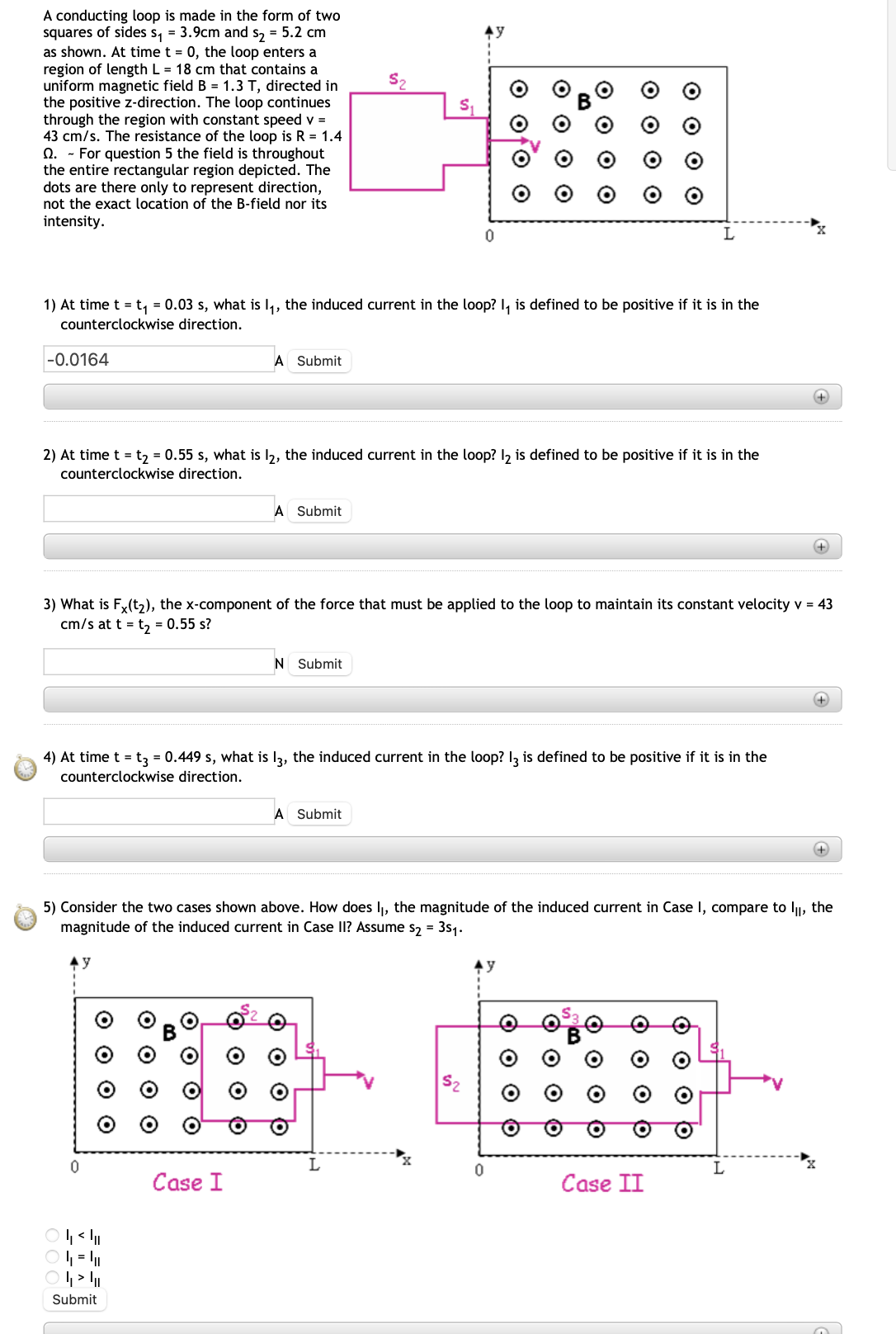Answered step by step
Verified Expert Solution
Question
1 Approved Answer
A conducting loop is made in the form of two squares of sides s = 3.9cm and s = 5.2 cm as shown. At

A conducting loop is made in the form of two squares of sides s = 3.9cm and s = 5.2 cm as shown. At time t = 0, the loop enters a region of length L = 18 cm that contains a uniform magnetic field B = 1.3 T, directed in the positive z-direction. The loop continues through the region with constant speed v = 43 cm/s. The resistance of the loop is R = 1.4 Q. For question 5 the field is throughout the entire rectangular region depicted. The dots are there only to represent direction, not the exact location of the B-field nor its intensity. o of L 1) At time t = t = 0.03 s, what is I, the induced current in the loop? I is defined to be positive if it is in the counterclockwise direction. -0.0164 A Submit 2) At time t = t2 = 0.55 s, what is 12, the induced current in the loop? 12 is defined to be positive if it is in the counterclockwise direction. A Submit + 3) What is Fx(t2), the x-component of the force that must be applied to the loop to maintain its constant velocity v = 43 cm/s at t=t2 = 0.55 s? N Submit 4) At time t = t3 = 0.449 s, what is 13, the induced current in the loop? 13 is defined to be positive if it is in the counterclockwise direction. A Submit + 5) Consider the two cases shown above. How does I, the magnitude of the induced current in Case I, compare to |||, the magnitude of the induced current in Case II? Assume S = 3s1. O O 0 L 0 Case I 044 04-4 0471 Submit O O O O O O O O Case II L
Step by Step Solution
There are 3 Steps involved in it
Step: 1

Get Instant Access to Expert-Tailored Solutions
See step-by-step solutions with expert insights and AI powered tools for academic success
Step: 2

Step: 3

Ace Your Homework with AI
Get the answers you need in no time with our AI-driven, step-by-step assistance
Get Started


